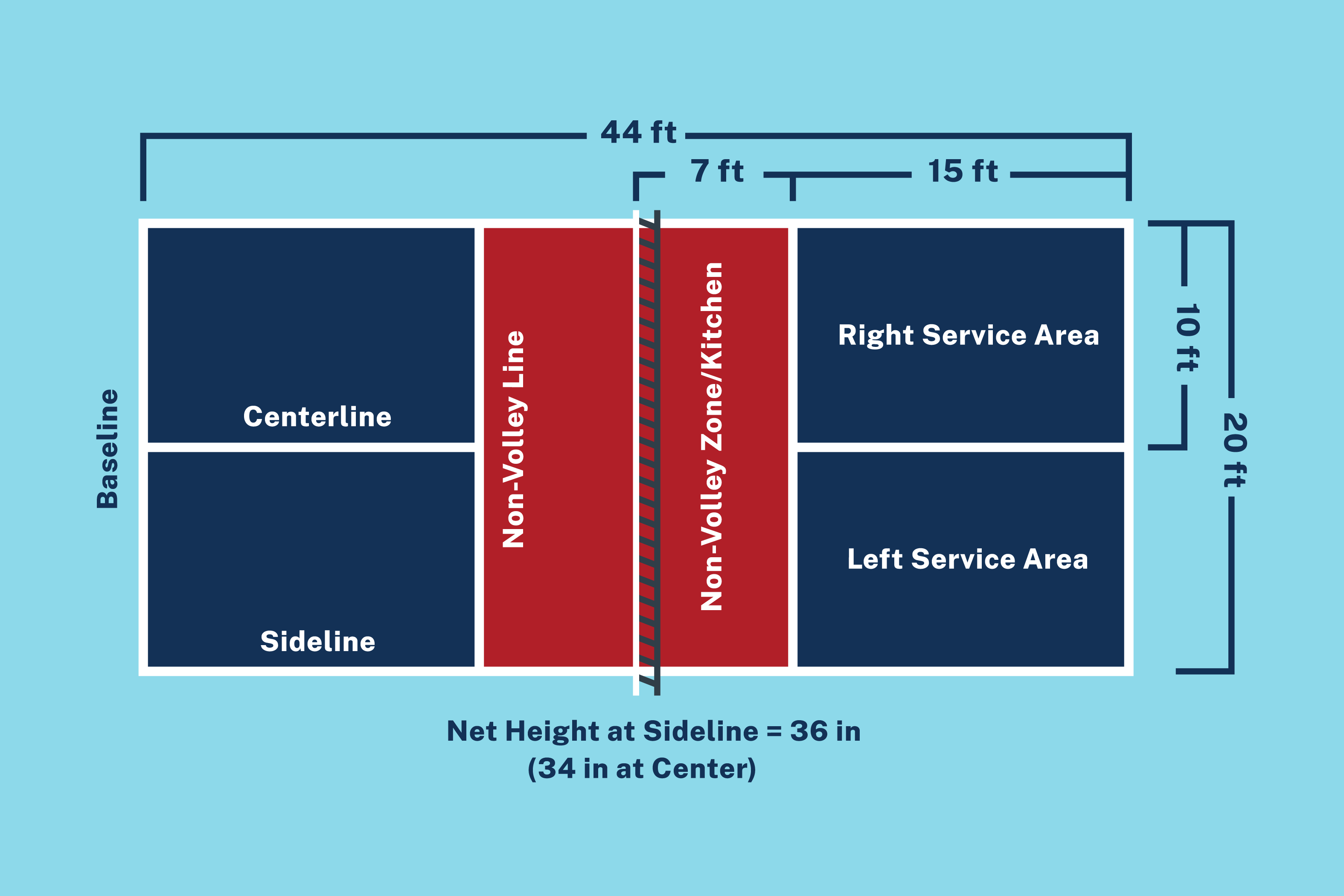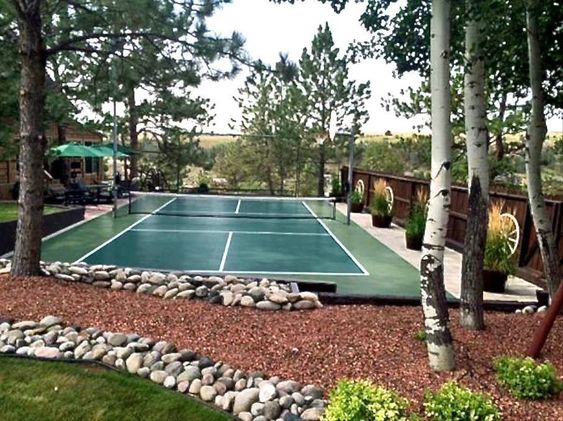Comprehensive Overview to Pickleball Courts Design & Construction in Illinois and Midwest
Comprehensive Overview to Pickleball Courts Design & Construction in Illinois and Midwest
Blog Article
Secret Consider the Construction of Pickleball Courts: From Site Selection to Last Finishes
The building and construction of pickleball courts encompasses a series of essential aspects, starting with the choice of a proper site that stabilizes availability with ecological considerations. Crucial components such as court measurements, surface materials, and drainage systems dramatically impact not just the high quality of play yet likewise the long life of the center. Interest to illumination and finishing touches can elevate the overall experience for gamers and viewers alike. Understanding exactly how each of these components interrelates may disclose insights that are frequently neglected, prompting a more detailed assessment of ideal techniques in court building.
Website Option Standards
When embarking on the building and construction of pickleball courts, it is necessary to toenail down the site selection requirements that will certainly make sure optimal playability and ease of access. The area needs to be quickly reachable for players, preferably positioned near houses or community centers, to urge participation.
Additionally, the terrain needs to be degree and stable, as uneven ground can bring about security threats and affect gameplay. Adequate drainage is also essential; picking a site with good water overflow will certainly aid maintain court conditions during negative weather condition.
An additional essential consideration is the availability of utilities. Access to power and water is needed for lighting and upkeep functions. Furthermore, closeness to vehicle parking centers is necessary, helping with simple accessibility for players and viewers alike.
Environmental elements can not be forgotten; natural shade from trees can improve gamer convenience, while exposure to dominating winds may disrupt play. Zoning regulations and area support should be taken into consideration to make sure that the job lines up with neighborhood guidelines and obtains the support it needs for effective implementation. By carefully examining these requirements, stakeholders can create an inviting and useful atmosphere for pickleball lovers.
Court Capacities and Layout
To make certain optimal gameplay and adherence to policies, the dimensions and layout of pickleball courts must be thoroughly specified. A standard pickleball court determines 20 feet in width and 44 feet in length for both singles and increases play. The suggested design consists of a non-volley zone, frequently referred to as the "kitchen area," prolonging 7 feet from the net on either side. This area is crucial, as it influences player positioning and shot choice - Illinois and midwest.
The net elevation is set at 36 inches at the sidelines and 34 inches at the center, developing a small dip that affects ball trajectory. Court markings are just as crucial; lines should be 2 inches large and distinct in color to make sure presence.
Additionally, a barrier area bordering the court is recommended, visit this site generally extending 5 to 10 feet beyond the sidelines and baselines to fit gamers' movements and improve safety. Appropriate layout and dimensions not just ensure compliance with official laws yet also improve the overall playing experience, fitting both leisure and affordable play. Mindful preparation in these areas is vital to the successful building and construction of pickleball courts.
Surface Area Product Options
Choosing the appropriate surface material for pickleball courts is vital for guaranteeing ideal player performance and safety and security. The selection of surface can dramatically affect gameplay, including round bounce, grip, and player convenience.
There are several options available, each with its unique attributes. Asphalt is a popular option because of its resilience and reduced upkeep demands. It gives a solid having fun surface area that can endure numerous climate condition but might need periodic resurfacing.
Concrete is an additional extensively made use of material, using superb long life and a smooth finish. It permits regular ball bounce however can be tough on gamers' joints, making it much less preferable for lasting play without correct padding.
For those looking for boosted comfort and shock absorption, supported acrylic surface areas present a viable choice. These surface areas incorporate a base layer with an acrylic overcoat, offering improved traction and a softer feel, which is useful for reducing the threat i was reading this of injuries.
Finally, synthetic turf is gaining grip, especially for multi-purpose facilities. Its versatility and reduced upkeep needs make it an attractive alternative, though it may not provide the very same sphere response as conventional difficult courts. Careful consideration of these choices will make certain an optimum having fun environment.
Water Drainage and Illumination Considerations
Appropriate drain and efficient lighting are necessary parts in the construction of pickleball courts, dramatically influencing both playability and safety. Sufficient water drainage systems avoid water accumulation, which can lead to unsafe surface areas and damages see this site to the court framework. A properly designed water drainage plan incorporates sloped surface areas and proper products to help with water move away from the playing location - Illinois and midwest. This not just preserves the honesty of the court yet likewise decreases downtime due to bad climate conditions.
Lighting is just as vital, especially for courts planned for evening usage. Correct lighting improves presence, guaranteeing that players can see the sphere clearly and decreasing the threat of mishaps. The placement of lighting fixtures need to be tactically prepared to eliminate shadows and give even circulation of light throughout the court. LED lights are suggested for their power performance and longevity, providing intense illumination while minimizing operational prices.

Final Coatings and Upkeep
After addressing drainage and illumination considerations, focus transforms to the last finishes and ongoing maintenance of pickleball courts. Usual alternatives consist of acrylic finishings and specialized sporting activities surface areas that offer optimal traction and padding.

Seasonal upkeep may include resurfacing every couple of years, depending on usage and environmental variables. Appropriately preserving webs, court lines, and surrounding areas is equally crucial to supply a secure and pleasurable having fun experience. By buying quality coatings and sticking to an organized maintenance routine, center proprietors can guarantee their pickleball courts continue to be in outstanding problem for years to find.
Conclusion
To conclude, the successful construction of pickleball courts depends upon meticulous interest to numerous crucial variables. Site option need to focus on access and terrain stability, while court measurements and layout must stick to optimal criteria for gameplay. The choice of surface material significantly affects gamer safety and performance. Additionally, effective drain and ample illumination add to court durability and exposure. Finally, quality coatings and a durable maintenance routine are necessary for maintaining the court's problem, improving the general experience for players and spectators alike.
Report this page